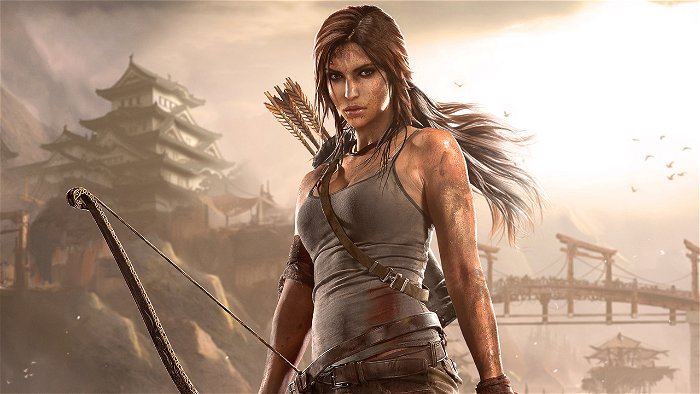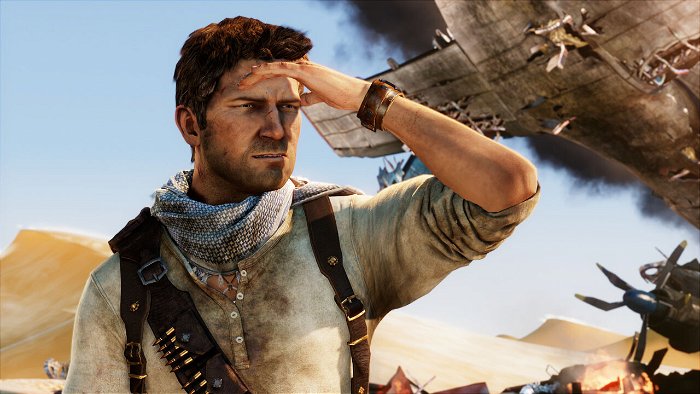It’s probably because of the increased realism in visuals combined the rising quality of the writing, but I find that as I play more recent games, I’m having a problem. It’s the same problem I will occasionally have with certain kinds of movies, where I’ll see a character do something, or watch an event unfold and think to myself, “I don’t buy that.”
This is not something that happens when I watch a cartoon, or play a ludicrous game like Katamari, where you simply have to throw up your arms and accept whatever lunacy is on show. But once a game starts to get “serious,” elevating itself to more than just mindless entertainment, those aspirations to realism make it harder to accept the more unrealistic aspects of the game. It’s something that’s happened in the Uncharted series, and most recently, the excellent Tomb Raider.

In Uncharted we are presented with Nathan Drake, a contemporary, happy go lucky adventurer cut from the same cloth as Indiana Jones. He’s a man that rubs shoulders with a lot of morally questionable characters, including, at times, his own surrogate father, Sully. Despite the gray area he inhabits on the ethical spectrum, he’s a man that cares, a man that is capable of love, kindness and doing the right thing. That’s the story we get anyway, and that’s the story that reliably plays out in cut scenes as Drake struggles to protect his friends, his romantic interest, and even just the sanctity of a cursed tomb or some other archaeological site.
The story of Uncharted is largely about how a man struggles with right versus wrong, but ultimately chooses to do the right thing, even if it costs him a fortune in plundered treasure. The GAME of Uncharted however, is about Nathan Drake wading into pirate installations, museums and military camps, killing every single thing in sight that isn’t his partner.
It’s an issue that is even touched on—but not tackled head on—in Uncharted 3, as one character asks him just how many people he’s killed to make it this far. Nathan Drake may be a likable guy that you’d want to go to a sporting event with and maybe have a beer afterwards, but he’s also killed—literally—thousands of people without remorse and somehow avoided the death penalty that most nations would sentence him to.
The same is true in the new Tomb Raider. On the one hand, Rhianna Pratchett has crafted a credible, believable, likable young woman. Lara Croft is a frightened, completely out of her depth college student that finds herself on an island populated with crazed castaways that have formed a cult. She shivers in the cold, she limps and whimpers as her injuries pile up, and when she kills for the first time in a convincing case of self-defence against rape, her tearful, traumatized reaction is both realistic and heart breaking. This is a girl that is at absolute rock bottom, someone you can sympathize with and care about.

Five minutes later, like Nathan Drake, she is an unstoppable killing machine, walking off bullet wounds in moments thanks to regenerative health, and, despite no prior military training, head shotting enemies with both a pistol AND a bow. Once again, players are jolted from the reality of the story—a girl coming to terms with the life-and-death struggle of her situation—into the reality of a mainstream action game that dictates players feel bad ass, and are empowered enough to take down a flood of enemies in minutes or less.
The story of the game is trying to communicate struggle, moral and physical conflict and ultimately finding an inner strength to rise to the occasion. The mechanics of the game make the audience feel like death incarnate, a notion reinforced by Lara shouting during firefights, “I’m coming for all of you, you bastards!”
The problem here is one of divergence. On the one hand, the cut scenes and stories of these games give us nuanced, emotionally credible characters, people we like and relate to. On the other hand…The problem here is one of divergence. On the one hand, the cut scenes and stories of these games give us nuanced, emotionally credible characters, people we like and relate to.
On the other hand, the need of an action game to make players feel empowered means that the body count in just 10 minutes of play usually surpasses—by a wide margin—the casualty count of the average action film. And it’s perfectly understandable why that is; a story is a passive experience, meant to be absorbed.

A game, on the other hand, is an interactive experience where the entertainment comes from having something to do, ie, killing lots and LOTS of people in brutal, cinematic ways. Realistically, for the character of Lara Croft, after an attempted rape and first kill, she should have been so traumatized that only a close network of friends and professional therapy would heal her emotional scars and make her functional again.
In a game, however, that’s no fun at all, so she picks herself up, ignores the fact that she’s been stabbed, caught in a bear trap, repeatedly dropped from great heights and is sporting multiple bullet wounds, to become a lethal master marksman and archer with a Wolverine-like healing factor that shrugs off fatal wounds in 10-15 seconds.
Unfortunately, this is an incompatibility that looks like it’s here to stay for most big, AAA releases. Some games, notably Bioshock and Spec Ops: The Line occasionally take the brave stance of actually questioning the easy, almost thoughtless brutality of games, but most don’t. After all, likable characters are fun, but so is killing a lot of people. Tomb Raider and Uncharted are merely the best examples of this uneasy, high budget coexistence.




